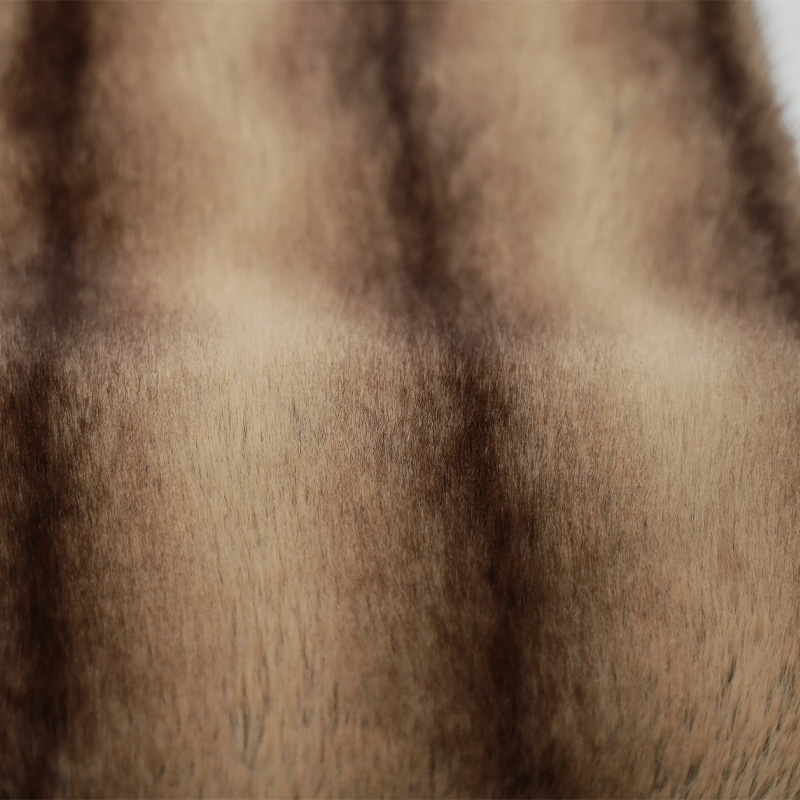











In the dynamic realm of fashion, materials play a pivotal role in shaping trends and defining aesthetics. Among the myriad of fabrics and textures, synthetic fox fur has emerged as a notable player, particularly in recent years. This artificial fur, designed to mimic the appearance and texture of genuine fox fur, offers a blend of characteristics that have garnered both praise and criticism within the industry. Here, we delve into the pros and cons of synthetic fox fur in the fashion world.

Pros:
Cost-Effectiveness: One of the most compelling advantages of synthetic fox fur is its price point. Compared to genuine fur, which can be exorbitantly expensive, synthetic alternatives provide a more affordable option. This makes high-fashion looks accessible to a broader audience, democratizing luxury and allowing more consumers to partake in fox fur-inspired trends.
Ethical Considerations: The production of genuine fur often raises ethical concerns related to animal welfare. Synthetic fox fur offers a cruelty-free alternative, appealing to consumers who prioritize ethical fashion choices. By selecting synthetic fur, fashion enthusiasts can adhere to their moral principles without sacrificing style.
Versatility in Design: Synthetic fox fur boasts remarkable versatility in terms of color, pattern, and texture. Designers can experiment with a wide range of aesthetics, creating pieces that cater to diverse tastes and trends. This adaptability makes synthetic fur a valuable asset in the ever-changing landscape of fashion.
Durability: Synthetic fox fur is known for its durability. It retains its shape and appearance over time, withstanding the rigors of daily wear and wash. This makes it a practical choice for individuals seeking long-lasting fashion investments.
Ease of Care: Unlike genuine fur, which requires specialized care and handling, synthetic fox fur is relatively easy to maintain. Standard cleaning methods suffice, saving time and effort for busy consumers.
Cons:
Perceived Quality: While synthetic fox fur has come a long way in mimicking the appearance of genuine fur, some consumers still perceive it as inferior in quality. The tactile experience of genuine fur, with its natural softness and warmth, can be difficult to replicate fully with synthetic materials.
Environmental Impact of Production: While synthetic fox fur avoids the ethical issues associated with genuine fur production, its manufacture can still have environmental implications. The production of synthetic materials often involves chemicals and processes that may contribute to pollution and resource depletion.
Limitations in Authenticity: For those seeking authentic, high-end fashion experiences, synthetic fox fur may not provide the desired level of authenticity. Genuine fur is often valued for its exclusivity and connection to nature, aspects that synthetic alternatives cannot fully replicate.
Allergies and Sensitivity: Some individuals may be sensitive or allergic to synthetic materials, which could pose a health risk. Synthetic fox fur, like other synthetic fabrics, may contain chemicals or treatments that can irritate the skin or trigger allergic reactions.
In conclusion, synthetic fox fur presents a complex picture in the fashion industry. Its cost-effectiveness, ethical appeal, versatility, durability, and ease of care make it an attractive option for many consumers and designers. However, perceived quality issues, environmental concerns, limitations in authenticity, and potential allergies serve as notable drawbacks. As the fashion industry continues to evolve, it will be crucial to weigh these pros and cons carefully, ensuring that synthetic fox fur is used responsibly and ethically, while meeting the needs and expectations of consumers.